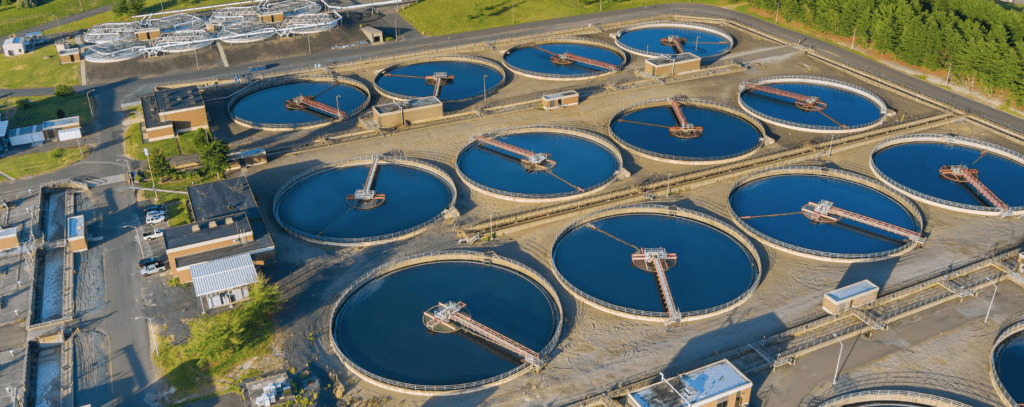MixMode Threat Research is a dedicated contributor to MixMode.ai’s blog, offering insights into the latest advancements and trends in cybersecurity. Their posts analyze emerging threats and deliver actionable intelligence for proactive digital defense.
Our daily lives depend on critical infrastructure – water treatment facilities, power grids, and transportation systems. Unfortunately, these systems are increasingly becoming targets for cyberattacks. A recent incident involving American Water, the largest water utility in the US, highlights this growing threat.
The American Water Attack: A Wake-Up Call
In early October 2024, American Water reported unauthorized activity in its computer networks. While the company claims no operational disruptions occurred, the incident raises critical concerns about the vulnerability of critical infrastructure. This attack follows a trend – earlier this year, a Texas water treatment facility was compromised, causing an overflow.
The Growing Threat of Geopolitical Cyberattacks on Water Systems
Cyberattacks targeting critical infrastructure, particularly water systems, have become increasingly prevalent and concerning. Geopolitical rivals of the United States, including Russia, Iran, and China, have been implicated in several of these attacks.

Why Water Systems?
Water is a fundamental resource, and disrupting its supply can have severe consequences. Disrupting water systems can lead to:
- Public health crises: Contaminated water can cause diseases and illnesses.
- Economic damage: Disruptions in water supply can impact businesses, agriculture, and other industries.
- Social unrest: Water shortages can lead to civil unrest and instability.
Recent Incidents and Allegations:
While specific details often remain classified, there have been several reported incidents and allegations involving foreign state-sponsored attacks on US water systems:
- Texas Water Treatment Facility: In 2021, a Texas water treatment facility was compromised, leading to the accidental addition of excessive amounts of caustic chemicals.
- Russian Allegations: US officials have accused Russia of targeting critical infrastructure, including water systems, as part of its cyber warfare activities.
- Iranian and Chinese Involvement: There have also been concerns about Iranian and Chinese state-sponsored actors targeting critical infrastructure, including water systems.
The Threat of Espionage and Disruption:
These attacks are not just about causing immediate disruption. They can also serve as a means of espionage, allowing attackers to gather intelligence on critical infrastructure and potentially plan future attacks.
What Types of Attacks Are We Seeing?
Cybercriminals use a variety of tactics to target critical infrastructure. Here are some common examples:
- Malware: Malicious software that can disrupt operations or steal sensitive data.
- Ransomware: This variant of malware encrypts data and demands a ransom for decryption, potentially crippling operations.
- Denial-of-service (DoS) attacks: Flooding a system with traffic to make it unavailable to legitimate users.
- Social engineering: Exploiting human error or trust to gain access to systems.
The Cost of Cyberattacks on Critical Infrastructure
The consequences of a successful cyberattack on critical infrastructure can be devastating. It can lead to:
- Disruptions in essential services: Imagine a city without clean water or a blackout during a heatwave.
- Financial losses: Businesses and individuals can suffer significant economic harm.
- Loss of life: In extreme cases, attacks on critical infrastructure can endanger lives.
The Importance of Proactive Measures:
The increasing frequency and sophistication of cyberattacks targeting critical infrastructure highlight the urgent need for proactive measures. Investing in advanced threat detection solutions, like MixMode, is essential to protecting our nation’s vital resources.
How Can MixMode Help?
MixMode believes the best defense is a proactive one. MixMode’s AI-powered threat detection platform provides comprehensive security for critical infrastructure. Here’s how:
- Real-time Threat Response: Provides actionable insights and recommendations for mitigating threats in real time.
- Adaptive Security: Continuously learns and adapts to evolving threat landscapes, ensuring ongoing protection.
- Integration with Existing Systems: Seamlessly integrates with existing security tools and infrastructure.
- Reduced False Positives: Focuses on real threats, not wasted investigations on normal activity.
With MixMode, enterprises can take a proactive approach to securing their critical infrastructure.
Other MixMode Articles You Might Like
MixMode Recognized By USA Today As One Of The Top 10 AI Companies To Watch in 2024
Air-Gapped Systems Breached: A Deep Dive into the Attack and Prevention
RansomHub Ransomware Targets Critical Infrastructure: A Detailed Look at the CISA-FBI Advisory
The Imperative of Explainability in AI-Driven Cybersecurity
Alarming Intrusion: Chinese Government Hackers Target US Internet Providers
*** This is a Security Bloggers Network syndicated blog from MixMode authored by MixMode Threat Research. Read the original post at: https://mixmode.ai/blog/the-rise-of-cyberattacks-on-critical-infrastructure-are-you-prepared/


